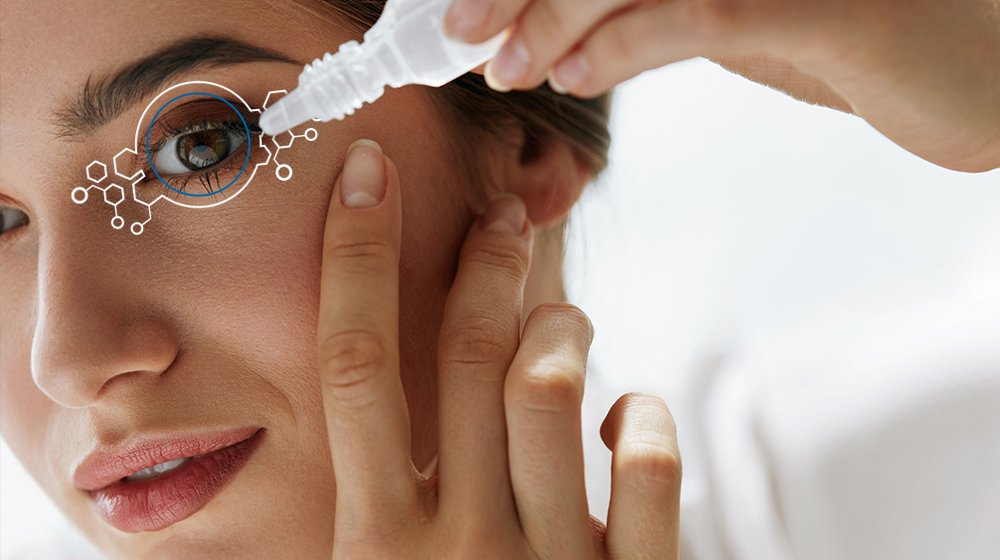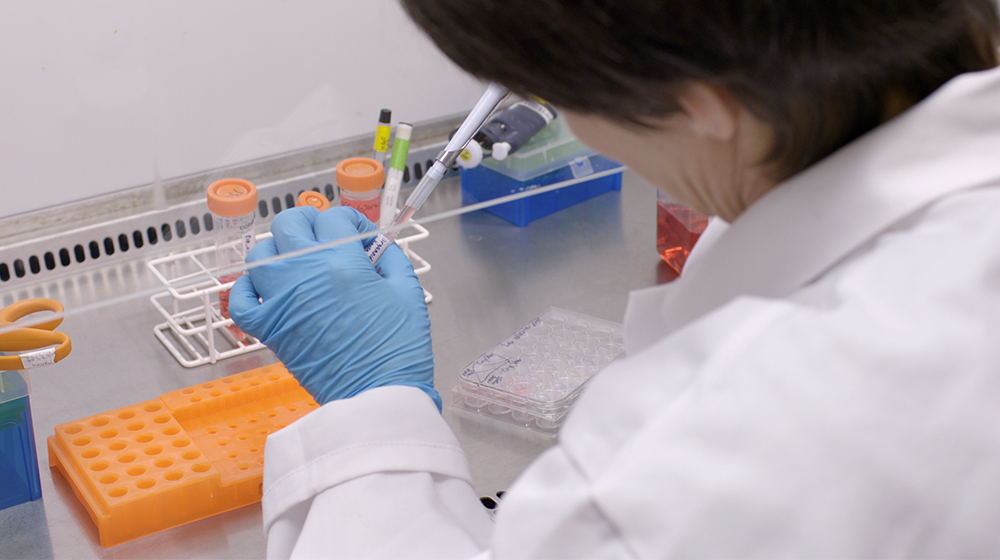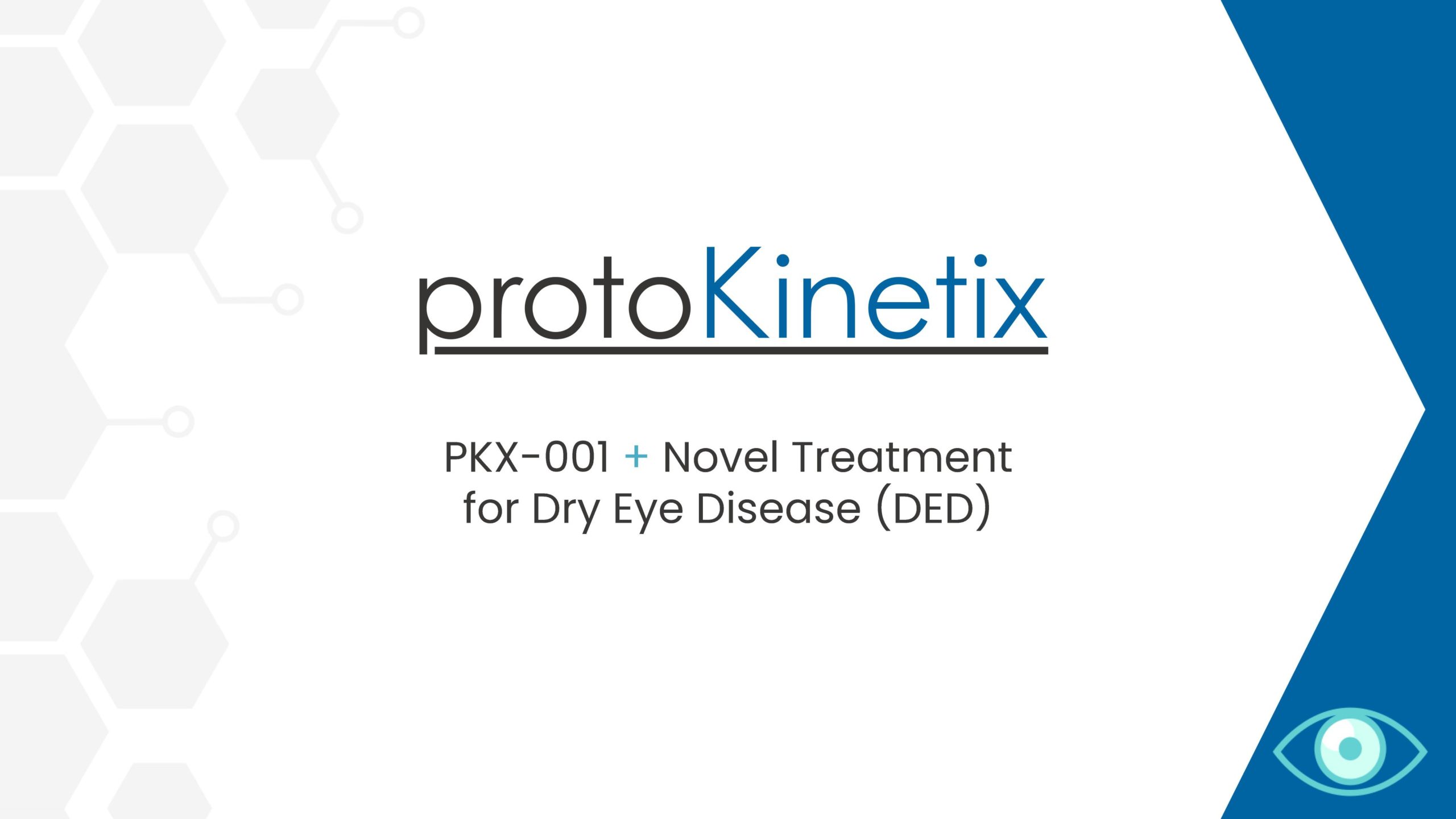A 2017 study from the American Optometric Association found that more than 16 million Americans are affected by dry eye disease (DED), also known as dry eye syndrome (DES), including nearly twice as many women as men.
There is no single cause for eye dryness. It can be temporary or chronic and result from a range of biological and environmental factors.
While dry eye disease can be managed somewhat by eye drops on the market today, there is no proven cure or one-size-fits-all solution. Continue reading to learn more about dry eye disease and how our proprietary anti-aging glycopeptide, AAGP®, could be used in the development of improved treatments.
What is dry eye disease?
According to the Mayo Clinic, dry eye disease is, “a common condition that occurs when your tears aren’t able to provide adequate lubrication for your eyes.” Some people don’t produce enough tears on their own, which can lead to dryness, irritation and even vision problems over time.
Who is affected?
Many individuals will experience dry eyes at one point or another. Dry air on an airplane can cause discomfort, weather changes could cause temporary irritation or medication side effects could be to blame. Chronic dry eye disease, however, typically indicates a long-term lack of tear production, often resulting from age, hormone imbalances or other medical conditions, including:
- Contact lens use
- Diabetes
- Menopause
- Ocular inflammation
- Refractive eye (LASIK) surgeries
- Rheumatoid arthritis
- Thyroid disease
Symptoms of dry eye disease and long-term effects
The most common symptom related to dry eye disease is, of course, dryness in the eyes. If you have DED, you may experience itching, burning or the persistent feeling that you have something in your eye. Other common dry eye disease symptoms include blurry vision, light sensitivity, stinging, burning, redness and mucus near the eye.
What causes dry eye disease?
Dry eye disease could be the result of our bodies low tear production or poor quality of tears produced. Tear producing cells can die under stress-causing conditions and when they are lost they are replaced slowly.
Tear quantity
Glands in and around our eyes are responsible for tear production. When those glands deteriorate – either because of age, hormones, inflammation, medication use or another factor – dry eye disease can develop. What climate you live in could also affect the amount of tears your body produces naturally or how long they last. For example, those who live in windy or dry areas may experience more tear evaporation and, as a result, more dryness.
Tear quality
All tears are made up of water, oils, proteins and mucus. Water is responsible for the moisture in our eyes, oil helps to prevent evaporation and the mucus, or mucin protein, helps to spread the moisture over the surface of our eyes. Each of these components is critical to the quality of our tears, so if any are compromised, dryness is often the result.
How AAGP® could help improve dry eye disease treatments
While many of the existing eye drop treatments on the market are used to replace missing tears (addressing the effect of dry eye disease), ProtoKinetix researchers are investigating ways in which AAGP® can be utilized to help support tear production (addressing the cause of dry disease).
We are in the process of formulating our own prescription and over-the-counter eye drops that would not only provide temporary moisture to the eye but also help target and reverse cell damage for more permanent relief. Explore our recent press releases to keeps tabs on our progress:
• ProtoKinetix AAGP® Dry Eye Program Advancing
• ProtoKinetix AAGP® Exhibits Efficacy and Safety in Model of Dry Eye Disease
• ProtoKinetix Files for Patent Protection for AAGP® to be Used in Dry Eye Disease
Investing in the possibilities
The research exploring the potential for AAGP® as a dry eye treatment has been extremely promising, but to continue our investigations, we need the support of dedicated investors. If you are interested in investing in AAGP®, please talk to your broker or contact the team at ProtoKinetix.
According to research from Market Scope, global revenues for dry eye treatments are expected to increase from $4.6 billion in 2018 to $6.2 billion in 2023, due to the aging population and growing awareness of dry eye disease treatments. This is your chance to be part a medical discovery with massive market potential, and we hope you’ll join us.




